Text
I think you bring up a really interesting point in saying that the romance serves as a distraction from direct conversations about religious separatism. Do you think the romance served to make the film more digestible and foster more empathy between the audience and Husn Bano and Javed? Or do you feel it detracted from the heart of the film's social commentary?
Week 5: Dharmputra + Raj and Suresh: Questioning Myth-Making

Sony Jalarajan Raj and Adith K. Suresh question the efficacy of melodrama in conveying the complexities of Partition through film. Analyzing four films spanning three decades, including Yash Chopra’s 1961 Dharmputra, the two authors point out the surface-level separation of identity, religion, and state, leading to problematic narratives. Following a summarization of Dharmputra, they argue that
“the Bollywood narrative as an artistic medium of the Indian cultural land neglected the complicated interconnectedness of issues associated with the Muslim population. The oversimplification of its narrativizations reveals the triviality of treatment adopted by filmmakers. Popular films resorted to romantic melodramas as opposed to social realism where myth-making of the past was a preferable narrative trope instead of political evaluation" (358).
Before the focus on Husn’s love life and the birth of her son, Dilip, the beginning of the film shows scenes of the men from the two families - namely Nawab and Dr. Amrit - reflecting on the political climate of their country:
“The time has come to end the slavery. If we want to get rid of the British, we have to end the fight among ourselves”
“And this will come, but how do you end the partition of our country?”
This is one of the very few moments in the film where questioning Partition and religious separatism as a whole is at the forefront instead of the subsequent love plot and ample villainization of Dilip. Compared to these brief scenes, the romance and melodrama center in this film through its musical inclusion and lengthier scenes, like "Main Jab Bhi Akeli Hoti Hoon", the seven-minute song introducing Husn’s complicated romantic life. Rather than spending more time questioning, Dharmputra and many other Partition films focus on myth-making and the normalization of nationalism.

@theuncannyprofessoro
1 note
·
View note
Text
I think you make a good point about how the film urges viewers to reexamine their own biases--especially after witnessing the trajectory of Dilip's beliefs. Do you think the film tries to elicit a similar response for Husn Bano's story through her implied "promiscuity" and subsequent inability to conceive. Do you think the film is trying to reinforce gender norms or call attention to them?
Dharamputra
"Dharamputra", directed by Yash Chopra, intertwines themes of identity, religious division, and the social unrest that defined pre- and post-independence India (1925-1947). Set against this backdrop, the film delves into the story of Husn Bano, a young, unwed Muslim mother forced to give up her son due to societal pressures.
The film explores the human cost of such pressures, particularly on the identity of Indian Muslims. It exposes the phenomenon of "othering," where a dominant group constructs the "other" as different and potentially threatening. This concept becomes tragically relevant in the wake of Partition, as Dilip, raised as a Hindu and indoctrinated with nationalist fervor, struggles to reconcile his upbringing with the sudden revelation of his Muslim heritage.
Dilip's transformation from innocence to bigotry reflects the escalating religious tensions of the era. He embodies the "othering" process, becoming a staunch Hindu fundamentalist who actively opposes non-Hindu beliefs. As Sony Jalarajan Raj and Adith K. Suresh discuss in Reframing Islam in bollywood cinema: a study on the construction of the Islamic identity in Indian cinema, "Partition of the Indian subcontinent unilaterally separated individuals into elusive categorizations of ‘us’ and ‘them’". The film portrays the loss of a shared Hindu-Muslim identity post-Partition, highlighting the devastating impact of societal pressures and nationalistic ideology on individuals and communities.
In conclusion, while "Dharamputra" doesn't explicitly offer a path towards healing the divides, it is a reminder of the human cost of religious polarization and the enduring need for understanding and tolerance in a divided world. By showcasing the tragic consequences of othering and the loss of identity, the film compels viewers to critically examine their own biases.

Works cited:
Jalarajan Raj, Sony, and Adith K. Suresh. "Reframing Islam in bollywood cinema: a study on the construction of the Islamic identity in Indian cinema." Asian Journal of Communication (2023): 1-15.Harvard
8 notes
·
View notes
Text
Reading Response 4: Dharamputra
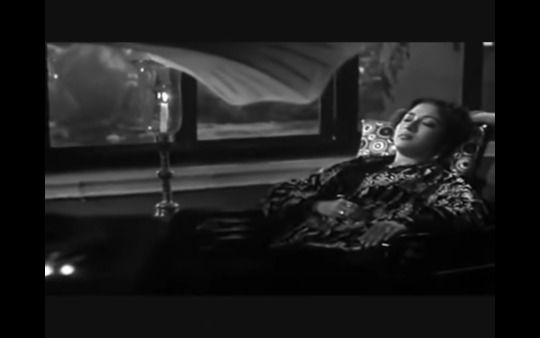
An important scene in the film Dharamputra (1961) was Husn Bano’s song about her romance with Javed. She puts on a record before reclining in a chair and closing her eyes, appearing to be deep in thought and tortured by some memory. As she looks over her shoulder and out the window again, the camera pans right to follow her gaze outside into the mist. The rest of the scene fades in and out between the flashbacks and Husn Bano’s present moment in the living room. The use of diegetic music to link the two narrative threads is key because although Husn Bano never sings or mouths the words, the audience feels as though the song belongs to her and her story. The fact that she puts on the music, lets it play over her flashbacks, and is the one to stop the record, makes it feel like she uses the music as her voice when she can’t speak. Her voicelessness relates not only to her need to keep the secret, but also to the social-political context discussed in Sony Jalarajan Raj and Adith K. Suresh’s “Reframing Islam in Bollywood Cinema: A Study on the Construction of the Islamic Identity in Indian Cinema”. The text notes that complicated identities and the historical significance of ‘Indianness’ were a “product of the ‘historical violence’; literally erupted from the day when India as a nation came into existence, and was subliminally re-represented through the spectacles of artistic imagination”. Artistic spectacles like the one represented in this song depicts Husn Bano as tortured and literally voiceless–generating empathy for her situation.

0 notes
Text
Do you think that this film is more akin to the advertisement ploy of the Monkees tv show or more of a music video format like Across the Universe?
Roundtable III: A Musical In Disguise - Tommy (1975)

The film Tommy (1975), directed by Ken Russell, is a musical fantasy drama that follows a boy named Tommy after he watches his step father kill his father. After this incident, Tommy goes psychosomatically deaf, dumb, and blind. After Tommy discovers his great talent for playing the pinball machine, he accumulates a cult following that take his skills as divine powers. Eventually, Tommy regains his senses and attempts to sell cheap gimmicky products that he claims will give his followers his powers. Tommy is played by the harmonica player of the band The Who. The entire film is based on Tommy, the album by the who released in 1969.
What are the social aspects within the film’s narrative that align with the film’s songs?
During the 70s, society was characterized around large crowds of rock and roll fans flocking to prominent bands. Tommy accumulates a cult following because of his sensational pinball skills, and the music for the film comes directly from the album Tommy, by The Who, that were a prominent rock band in the 60s and 70s. In fact, the whole film is based on the album. During the 60s and 70s, it was not uncommon for rock and roll bands to be worshipped like they were profits or gods. One band could take over the world. In this film, Tommy is portrayed as the second coming of Jesus, granting abilities to his followers which come in the thousands. The song Pinball Wizard is the pinnacle song in the album that is also the main song in the film which Elton John performs. It is the main song that fills in the narrative of the film.
youtube
How do the historiographies of previously recorded songs inform audience relationships with the musical’s narrative and performers?
The previously recorded songs coming from the album Tommy, by The Who, engage the viewer with the musicals narratives of a rock and roll story. Tommy's story is one of great success and then tragedy as his own fans murder his mother and step father. The album Tommy and the live tour versions revitalized The Who's career throughout 1969 and 1970. This reflects how Tommy, in the film, had became an international success and made millions of dollars off of his pinball talents. The band went on to witness tragic events at their venues. Similar to how Tommy's story in the film ended in tragedy, The Who concert disaster of 1979 (11 deaths of fans trying to enter the venue) is evidence of how many rock and roll bands are involved in tragic accidents or downfalls. Even though the incident occurred after the making of this film, the concept still applies. A rock and roll band wanted to act in and produce a film, and it's a tragic, yet epic rock opera - one which reflects their own careers. Additionally, Pete Townsend oversaw the production of the films music and the rest of the band does perform in the film.
youtube
What musical genre/style drives the film’s score, and how does the genre/style (re)define the film as a musical?
This film is a rock musical, starring a rock artist, using a narrative from a rock song, and other rock music from that specific band. This style of music makes the whole film a rollercoaster of fantasy surrealism. From one scene to the next there is emotional tensions, to violent conflict, to perfect calm. These ups and downs in such fantastical ways represent a rock and roll song, or even the life of a rock and roll artist. Watching the film, don't know what's coming next, and it's the same with a band like The Who. As Alberto Mira states: "pop musical, like many established cycles, ends up being about pop music, pop stardom, and their legacies" (32).
youtube
18 notes
·
View notes
Text
How are jukebox musicals that tell a story shaped by the songs(like Mama Mia) different from musicals who's songs seem to come afterward? What changes about what these different styles of jukebox musicals achieve?
Mamma Mia!
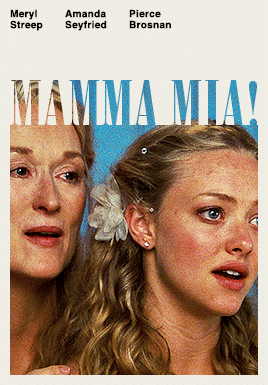
What are the social aspects within the film’s narrative that align with the film’s songs?
"Mamma Mia!" is set on a Greek island and reflects the cultural and societal aspects of Mediterranean life. The film portrays a close-knit community where traditions, family ties, and local customs play a significant role. Its setting embodies a sense of escapism and freedom, which resonates with the carefree and joyous spirit of many of ABBA's songs.
Additionally, the film's narrative touches upon themes of family values, female empowerment, and the evolving roles of women. Donna is portrayed as a strong and independent woman who raised her daughter Sophie on her own. This portrayal aligns with the changing societal attitudes towards women's independence and empowerment during the time the film was made and set.

How do the historiographies of previously recorded songs inform audience relationships with the musical’s narrative and performers?
ABBA's songs, deeply rooted in the 1970s and 1980s, reflect the cultural and societal attitudes of their time. In "Mamma Mia!", the film's late 20th-century setting and characters' experiences resonate with these themes. For instance, "Money, Money, Money" aptly captures the economic struggles faced by Donna as she tries to make ends meet running her tavern on the Greek island. The song's lyrics about financial hardship align with Donna's determination to provide for herself and Sophie. Additionally, "Dancing Queen" encapsulates the youthful spirit of Sophie and her friends as they prepare for the wedding. The song's celebration of youth, joy, and freedom mirrors Sophie's excitement and anticipation for her big day. These songs enrich the film's narrative by adding emotional depth to the characters' experiences and enhancing the audience's engagement with their stories.

What musical genre/style drives the film’s score, and how does the genre/style (re)define the film as a musical?
The pop music genre in "Mamma Mia!" complements the film's portrayal of a Mediterranean island community in the late 20th century. ABBA's upbeat and catchy songs, such as "Waterloo" and "Voulez-Vous," encapsulate the energy and optimism of that era.
Unlike traditional musicals with original scores, "Mamma Mia!" uses pre-existing songs to tell its story, making it distinctively vibrant and accessible to audiences familiar with ABBA's music. This approach not only celebrates the timeless appeal of ABBA's songs but also creates a nostalgic and engaging musical experience that resonates with fans and new audiences alike.
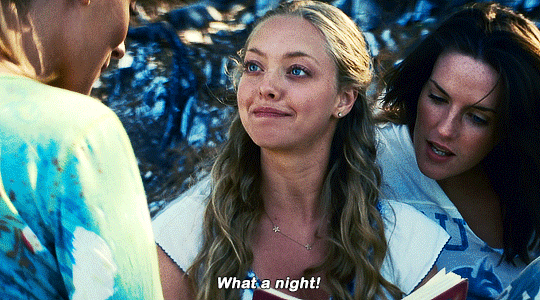
youtube
17 notes
·
View notes
Text
How do you think the competition aspect of this film impacts it's believability? Why do some songs adopt new meaning in the narrative while others are just covered?
Pitch Perfect (2012) by Jason Moore

What are the social aspects within the film's narrative that align with the film's songs?
The film’s setting in a college aligns with the songs and narrative, as this enhances themes of social institution structures in regards to race, gender, and status. As Beca enters college with no friends, she tries to find a community through clubs that are rooted in the cliques and established ties. But, once she was discovered by Chloe, a member of the Bellas, she asks to audition for the acapella group due to the lack of members, leading Beca to audition and join the group. Through the Bellas', we see a mixed group of people with different backgrounds and personalities, leading Aubrey to try to change the groups differences to oneness. This brings Beca and Aubrey to be in constant division of each other, effecting the group's dynamic. These disagreements pass the borders of the off-stage and on-stage narrative, as quarrels that are based on their differing personalities are placed during their performances. But, as the narrative continues, they find community in each other through their love of music and singing together as a group. The film's focus on diversity and popular culture of the time through the connected genre of satirical comedy that is shown through both the characters and group relationships that connect to their college environment.
youtube
How do historiographies of previously recorded songs inform audience relationships with the musical's narrative and performers?
We see the different acapella groups use songs that correlate to their identities, as the TroubleMakers use songs that exert romance and desire through a male perspective that connects to their “bad boy” personalities and the Barden Bellas use songs that have been sung throughout the group's generations, which matches with their traditional looks that are expressed through their stage outfits, dance, and stuck-up personalities of some members. But, throughout the film, the relationship between the groups develops, and the final performances show a change in group dynamic that is expressed through song. We see these changes through their amping of their stage outfits, choreography, and choice of songs that range from "Price Tag" by Jessie J and "Give Me Everything" by Pitbull, Ne-yo, and Afrojack. Specifically, Beca's choice of singing "Don't You (Forget About Me)" by Simple Minds to send a message to Jessie, a member of the troublemakers, for a second chance, as the song is based off their time watching The Breakfast Club (1985). The chosen songs within the film are not merely to connect to the narrative, but rather the relationships of characters that are intertwined with songs that represent their growth individually and together as a group.
youtube
What musical genre/style drives the film's score, and how does the genre/style (re)define the film as a musical?
Through Beca's help, the group decides to ditch the songs of tradition and mix songs of different genres that reflects on Beca's background of DJing and aspirations of music production. This reflects the film's intentions of performing songs that are based on mixing of songs in the form of acapella. This comes with different stylistic sounds within each group and the creation of a refreshing take on the expanding genre of musical. A particular scene of the film known as the "Riff Off" is a game played by the acapella groups, as a chosen genre is picked and groups must sing songs in the genre and find a flow within each song that is sung through continuation of lyrics and beat. This game mirrors the idea of mixing songs, whilst using acapella as a way to create melody. This shows a modern take on musicals, as these genres were gaining popularity during this time.
youtube
14 notes
·
View notes
Text
How do the musical numbers immerse the audience? Does the show normalize the inclusion of these numbers in the story or embrace how they stand out?
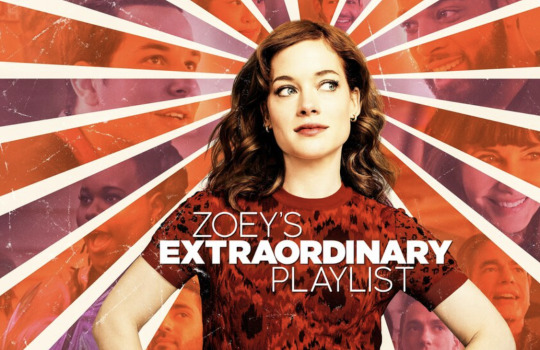
Zoey’s Extraordinary Playlist (2020-2021)
In "Zoey's Extraordinary Playlist," the dual-focus narrative technique serves as a strategic storytelling tool, transcending heteronormative romantic pairings to explore a rich tapestry of relationships and connections. While romance undoubtedly plays a significant role, the series delves much deeper, intricately weaving narratives of friendships, familial bonds, and professional dynamics.
youtube
Central to the series are the "inevitable" couplings, such as Zoey's relationships with Max and Simon. These relationships are not merely depicted as romantic pairings but are rather complex and multifaceted connections that evolve over time. Zoey's bond with Max, for instance, is portrayed with warmth, familiarity, and a shared history, while her connection with Simon is characterized by tension, chemistry, and a sense of the unknown. These nuances are accentuated through cinematic similarities and contrasts, underscoring the intricate dynamics of human relationships.
youtube
A defining feature of "Zoey's Extraordinary Playlist" is its innovative use of musical numbers to enhance storytelling. Drawing inspiration from fairy tales, backstage dramas, and folk musicals, these sequences serve to replicate the enchanting essence of these genres while simultaneously deepening the narrative experience. Whether it's characters breaking into spontaneous song or participating in elaborate dance numbers, the musical elements of the series create a vibrant, immersive world that invites viewers to become fully immersed in the characters' lives and experiences.
Furthermore, the series utilizes musical numbers to convey characters' innermost thoughts, desires, and emotions in a way that transcends traditional dialogue. Through song and dance, viewers gain unique insights into the characters' motivations and struggles, fostering a deeper connection with their journeys. This innovative approach not only entertains but also resonates on a profound emotional level, touching upon universal themes of love, loss, and self-discovery in a way that is uniquely captivating.
youtube
14 notes
·
View notes
Text
Do you think avoiding the dual focus strategy is a way to switch things up in a show? Does it make things more interesting and complicated or does it make for lackluster storytelling?
Daisy Jones and The Six
youtube
How does the series use dual-focus narrative as a strategic storytelling tool beyond heteronormative romantic pairings?
The Prime Video miniseries "Daisy Jones & The Six" leverages the dual-focus narrative strategy, as outlined by Robynn Stilwell, in a way that transcends the confines of traditional heteronormative romantic pairings. While undeniable chemistry exists between Daisy Jones and Billy Dunne, the series explores other aspects of their lives as well. It explores the intricate, symbiotic creative partnership between Daisy and Billy, the profound sense of familial connection within The Six, and the complex challenges faced by a woman with immense ambition navigating a male-dominated music industry.
By expanding its focus beyond just romance, the series paints a more engaging story. It prioritizes exploring the complexities of artistic collaboration and the emotional dynamics of a tight-knit group over a singular romantic plotline. This approach allows for a more nuanced and compelling portrayal of the characters' relationships and struggles.
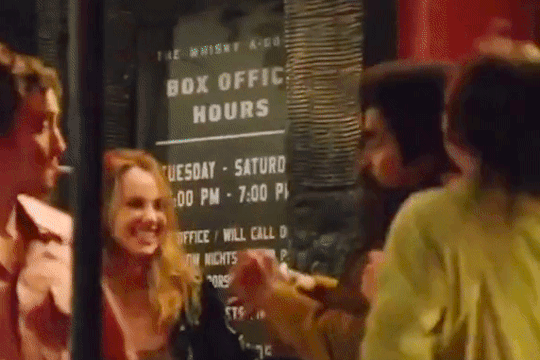
What are the “inevitable” couplings within the series and how are they accentuated through “cinematic” similarities and contrasts?
Although the series avoids the trope of forcing a romantic resolution between Daisy and Billy, it does utilize distinct cinematic techniques to accentuate certain pairings. Their intense on-stage chemistry is amplified through dynamic cuts that mirror the synergy of their musical connection. This echoes the concept described by Robynn Stilwell in Dual Focus Strategy in a Serial Narrative, where "This ‘inevitable’ coupling may be accentuated by paired songs or, more powerfully, by a duet linking the couple musically and emotionally, whether through a physical meeting, or a virtual one created with parallel editing that cuts back and forth between their individual spaces" [1]. However, when their creative visions diverge, contrasting close-ups highlight the emotional friction that arises.
In contrast, the relationship between Billy and Camila is portrayed through a lens of warmth connection. Soft focus and warm lighting bathe their interactions, highlighting the deep emotional bond they share.
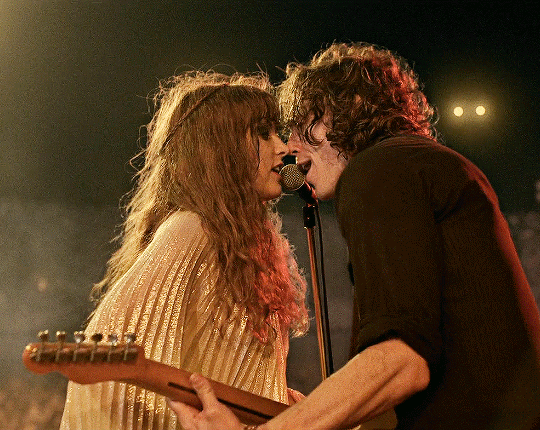
How does the series use musical numbers within and beyond the narrative world to replicate fairy tale, backstage, or folk musicals?
The musical numbers in "Daisy Jones & The Six" function not simply to showcase the band's performances, but also as narrative tools. The series' most compelling use of music lies in its ability to replicate the raw emotions and interpersonal conflicts that exist within the band. Intimate acoustic sets with stripped-down arrangements become a reflection of this backstage drama.
These stripped-down performances, reminiscent of the raw energy and emotional vulnerability often captured in backstage musicals, allow viewers a glimpse into the inner lives of the band members and the tensions that simmer beneath the surface of their polished stage personas.
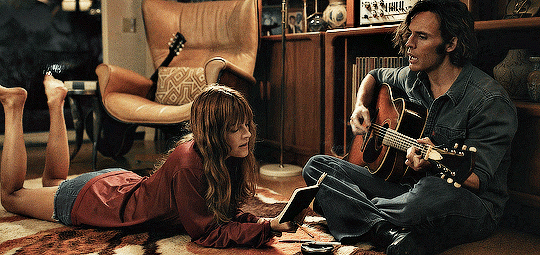
Works cited:
[1] Stilwill, "Dual Focus Strategy in a Serial Narrative",384.
16 notes
·
View notes
Text
How do flashbacks impact the dual focus narrative? Are the past and present juxtaposed?
Queens (2021-2022) by Zahir McGhee
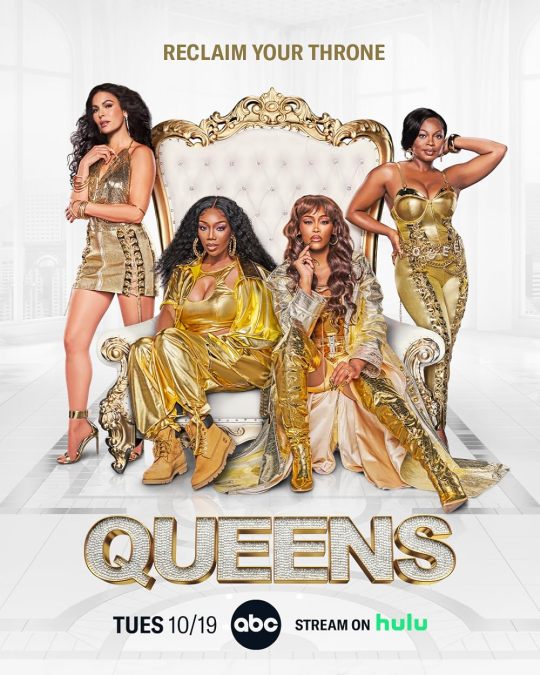
In Zahir McGhee's musical TV show, Queens (2021-2022), follows the story of four women in their 40s previously in a famous hip-hop group together, reuniting to regain fame. Throughout the first two episodes, we see the show rehashing their past and the changes of roles in each of their lives that creates individual hardship, but finding comfort and vulnerability within their group.
How does the series use dual-focus narrative as a strategic storytelling tool beyond heteronormative romantic pairings?
Throughout the first episode, we are shown each member of the group and their current situations outside of their past. Brianna, or Professor Sex, is a mother of five and recently caught her husband cheating on her with a student of his. On top of that, he was diagnosed with cancer and had to get surgery, leaving Brianna having to take care of him for the sake of her children. Jill, or Jill the Thrill, is struggling to find coexistence with her sexuality and religion, as she has been having an affair with a woman that she is in love with and is having a hard time confronting her husband. Naomi, or Xplicit Lyrics, continues to chase her dreams of making music whilst trying to balance being a present mother for her daughter. In connection is her past complicated relationship with the group’s manager, Eric, who chose to be with Valeria, or Butter Pecan.
youtube
At the end performance at the BET, the women performed for the first time on stage together since they broke up, as each of their rap parts were in regards to their personal and romantic relationships. The use of rap as a way to create both a powerful and vulnerable moment for them as friends and as women facing the hardships of their reality. Especially when rap and hip-hop is a male dominated genre, the women's ability to use rap as a way to gain control and power over their own bodies and terms of their own lives changes the narrative to show themes of black femininity and the toxicity of the music industry towards women of color.
What are the “inevitable” couplings within the series and how are they accentuated through “cinematic” similarities and contrasts?
The use of flashbacks and song as a way to cinematically explain the relationships between characters is embedded throughout the series. Although there are romantic relationships in the show, the relationship between the women and their loved ones is stands out, as there connection instills a comfortable vulnerability within conversations had and through song.
youtube
Before the BET performance, Naomi sings a beautiful ballad in regards to her relationship with her daughter. But, this song expands to the women facing their issues through confrontation and self-reflection. Through editing, the song is paired with all the situations at hand using visuals that go along with the narrative and feelings of each character. Although this does not go along the traditional "inevitable" couple, this does show the strong connections of the women and their own journey of fully gaining independence from their controlling past.
How does the series use musical numbers within and beyond the narrative world to fairytale, backstage, and musical?
The film's modern time does not take away from the escaping reality that musicals give. The use of song, especially within Naomi who is still chasing her dreams of being a folk solo artist, but is faced with obstacles due to the sexist and racist environment of the music industry. After meeting with a label that denies her of being a star, she calls her daughter in disappointment of how the meeting went. Her daughter puts her in her place, expressing how Naomi's efforts expended her time with her daughter and if she gives up now there would have been no point of her absence.
youtube
After the call, Naomi goes to the label manager's house to prove that she is a star, as she covers the song "Wrecking Ball." The song is coupled with her daughter, who is at home, playing the song on piano and layover verses that give it an emotional and magical feel. Moreover, Brandy's acting showed a vulnerable performance that characterizes Naomi unbelievable talent and her cherishing relationship with her daughter. Vulnerability through song shows the nature of the musical and how it is connected to the character's feelings that is enhanced through performance and editing.
12 notes
·
View notes
Text
How does the dual focus narrative impact a story with women at its center? The article mentioned how the dual focus narrative will often shift to rivalry instead of heteronormative relationships. Are there other elements besides rivalry that the dual focus narrative highlights?
RoundTable - STAR

How does the series use dual-focus narrative as a strategic storytelling tool beyond heteronormative romantic pairings?
The show's emphasis on diverse characters, relationships, and experiences contributes to its rich and multifaceted portrayal of contemporary life in the music industry. In the pilot, the show opens with the main character, Star, staring at herself in a mirror designed to look like a backstage dressing room mirror, followed by a proud smirk as she gleefully exits the room, drags her hand across the velvet curtains, and lights come up as we hear audience uproar. Although the scene is hopeful and exciting, it’s accompanied by an unidentified narrator that’s saying how Star always thought she would be as big as her name, but she’s a complicated girl who is not a fan of rules or playing with others. More broadly, however, Star overall uses really clever and unique ways to include dual focus narrative.
"Star" features a diverse cast of characters from different backgrounds, ethnicities, and sexual orientations. By employing a dual-focus narrative, the show can delve into the individual experiences and struggles of each character, regardless of their romantic relationships. This allows for a more comprehensive exploration of diverse identities and perspectives.
youtube
While romantic relationships are present in the show, "Star" places a significant emphasis on the bonds of friendship and sisterhood between the main characters. The dual-focus narrative allows the show to explore the complexities of these relationships, including conflicts, loyalty, and support, without solely relying on romantic pairings to drive the story forward.
In addition to personal relationships, "Star" also explores the professional ambitions and aspirations of its characters. Like so clearly stated in Robynn Stilwell’s “Dual-Focus Strategy in a Serial Narrative,” the dual-focus narrative allows the show to depict the challenges and triumphs of pursuing careers in the music industry, including issues related to fame, success, and artistic integrity. I also think it’s important to note that although the name of the show is Star, after the shows protagonist, the dual focus highlight is in the show’s ability to keep the narrative relevant to all characters.
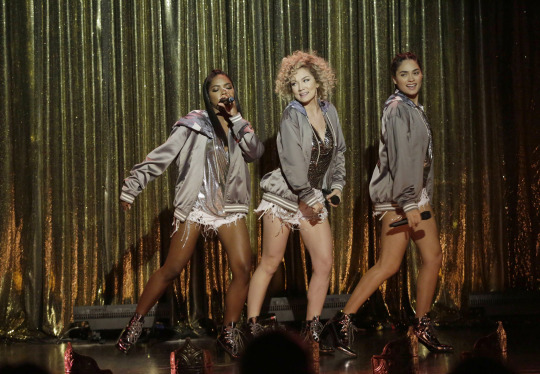
What are the “inevitable” couplings within the series and how are they accentuated through “cinematic” similarities and contrasts?
The "inevitable" couplings within the series "Star" are accentuated through cinematic techniques that highlight both similarities and contrasts between the characters. By utilizing visual storytelling elements such as framing, lighting, and editing, the series enhances the emotional depth and complexity of these relationships, contributing to the overall narrative richness of the show. There are notable relationships between important characters throughout the series’ run, however, for the sake of this, I will be discussing the more prominent relationships that align more closely with the inevitable and cinematic couplings.
Alex Crane and Derek Jones share a deep connection rooted in their shared passion for music and their journey to overcome personal obstacles. Cinematically, their coupling is accentuated through sequences that showcase their musical collaborations, often featuring dynamic camera movements and editing techniques to emphasize their creative synergy. Additionally, contrasts in their backgrounds and personalities are explored, adding depth to their relationship dynamics.
Carlotta Brown and Jahil Rivera share a complex relationship that evolves throughout the series, blending elements of mentorship, friendship, and romantic tension. Their coupling is accentuated through cinematic parallels, such as shared close-up shots during moments of vulnerability and reflective lighting to convey the emotional depth of their connection. However, contrasts are also evident, particularly in scenes where they confront their conflicting priorities and loyalties.


How does the series use musical numbers within and beyond the narrative world to replicate fairy tale, backstage, or folk musicals?
They talk about resolution and situation when it comes to tv series musicals. How shows have situational reasons to perform and introduce songs into the overall plot/narrative. After television musicals picked up again after about 10 years with Glee, and that popular narrative of teen/young adult casts melted into the backstage musical, which set off the more recent trend of tv programs. The film does replicate a backstage musical. The vocal performances are set up in as performances for the characters, however, they break the fourth wall and go into somewhat of a music video. The camera angles follow the performers, engaging and looking into the camera, sometimes even fantasy sequences where the girls are imagining themselves on a bigger stage. In breaks of register from speaking - singing and walking to dancing, there’s a developed language that smooths those transitions either through a carefully cultivated “naturalism” or an escape into fantasy, or both. Musical numbers in Smash and Nashville slide along the continuum, while aspects like camerawork or performance style can increase, intensify, or even create narrative elements that do not necessarily exist “on the page”(Stilwell, 2019).
youtube
In addition to performing on stage, the characters in "Star" frequently use musical numbers to express their emotions, resolve conflicts, and navigate the challenges of the music industry. These backstage musical moments provide insight into the characters' inner thoughts and feelings, allowing viewers to connect with their struggles and triumphs on a deeper level. Through music, the series explores themes of ambition, rivalry, and redemption, mirroring the drama and intensity of backstage life in the entertainment industry.
#oxyfilmmusical #televisionmusical @theuncannyprofessoro
15 notes
·
View notes
Text
How do you think Baz Luhrman's directorial style influences the dual focus narrative?
The Get Down (2016)
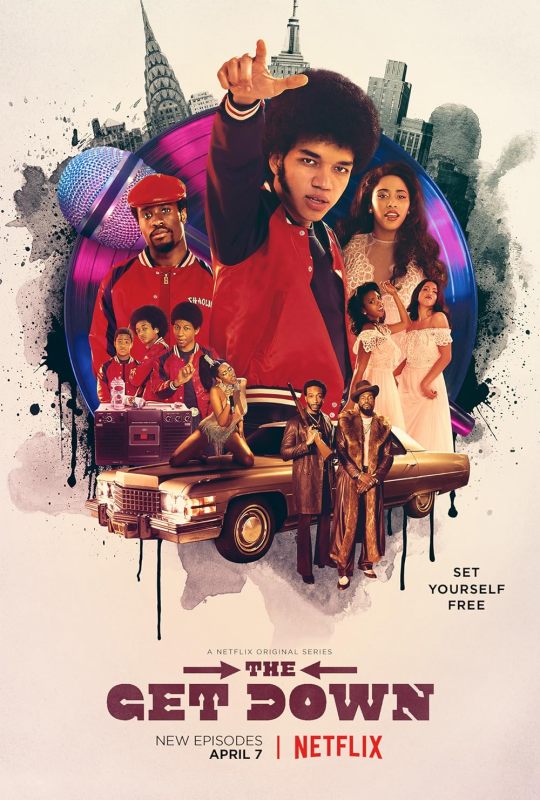
The Get Down is a television series created by Baz Luhrmann and Stephen Adly Guirgis. It premiered on Netflix in 2016 and consists of one season split into two parts. Set in the South Bronx in the late 1970s, the series explores the rise of hip-hop, disco, and punk music against the backdrop of a rapidly changing New York City.
The story follows a group of teenagers navigating the challenges of urban life while pursuing their dreams of music stardom. The main characters include Ezekiel "Zeke" Figuero, a talented poet and aspiring rapper; Mylene Cruz, a determined young singer with ambitions of becoming a disco star; Shaolin Fantastic, a streetwise graffiti artist and DJ; and other members of their diverse community.
The Get Down combines elements of drama, music, and historical fiction to depict the cultural and social dynamics of the era. The series is known for its vibrant visuals, dynamic musical performances, and engaging storytelling. It explores themes such as identity, ambition, love, and the power of art in the face of adversity.
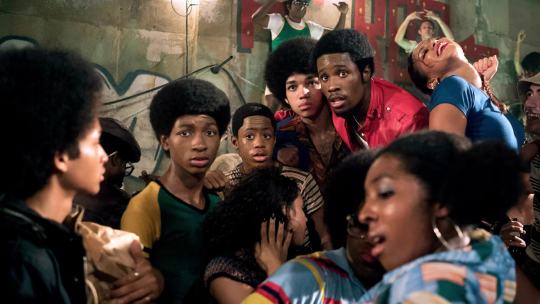
How does the series use dual-focus narrative as a strategic storytelling tool beyond heteronormative romantic pairings?
The Get Down employs a dual-focus narrative to delve into multiple layers of its characters' lives and the broader socio-cultural context of 1970s New York City. Beyond heteronormative romantic pairings, the series strategically utilizes this narrative tool to explore themes of identity, ambition, and social change. By intertwining the personal journeys of characters like Ezekiel and Mylene with the larger backdrop of the emerging hip-hop and disco scenes, the show creates a rich tapestry of interconnected stories that reflect the diversity of experiences within the community.
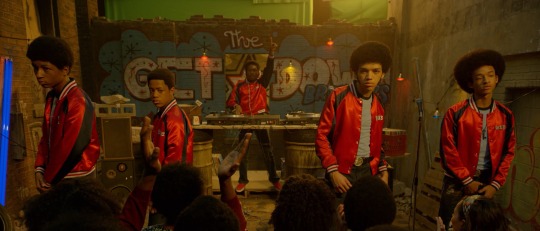
What are the “inevitable” couplings within the series and how are they accentuated through “cinematic” similarities and contrasts?
In terms of "inevitable" couplings, the series accentuates various relationships through cinematic similarities and contrasts. For example, the bond between Ezekiel and Shaolin Fantastic is portrayed with dynamic energy and shared passion for music and creativity. Their partnership is contrasted with the more traditional romantic coupling of Mylene and Zeke, highlighting the different forms of love and connection present within the narrative. Through visual motifs, such as parallel editing and juxtaposition of scenes, the series emphasizes the complexity of these relationships and their impact on the characters' lives.

How does the series use musical numbers within and beyond the narrative world to replicate fairy tale, backstage, or folk musicals?
Musical numbers in The Get Down serve as more than just performances within the narrative world; they replicate elements of fairy tales, backstage dramas, and folk musicals to enhance the storytelling experience. The use of music as a narrative device allows the show to explore themes of dreams, aspirations, and resilience in the face of adversity. Whether it's through elaborate dance sequences or heartfelt musical performances, these moments transport viewers into the characters' inner worlds, providing insight into their hopes, fears, and desires. By blending elements of fantasy and reality, The Get Down creates a unique and immersive musical experience that transcends traditional storytelling conventions.
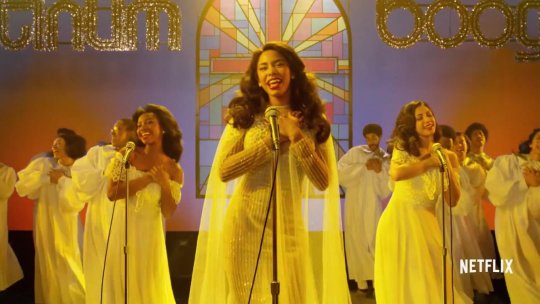
Overall, The Get Down was an amazing show that was gone too soon.<3
13 notes
·
View notes
Text
What kinds of implications come from a musical being set in the workplace with Eli Stone as the creator?
Roundtable: Eli Stone

How does the series use dual-focus narrative as a strategic storytelling tool beyond heteronormative romantic pairings?
The series uses dual focus narrative through the perspective on Eli's brain aneurysm. Eli's brother, wife, boss, and assistant are all close to him and care about him. Rather, Eli is important to them in all different ways. Therefore, when they receive the news, their responses are all different. The intrusion of the aneurysm forces different stories to be told about Eli's many relationships, outside of the obvious relationship with his fiancé. Eli's brother still keeps the relationship light hearted and toys to help him as he is a doctor. While Eli's assistant, Patti, sees the horrible news as a breakage of trust in their relationship because of their long term partnership in business.
youtube
What are the “inevitable” couplings within the series and how are they accentuated through “cinematic” similarities and contrasts?
The inevitable couplings are shown through the similarities and contrasts between certain characters and those relationships. For example, Eli Stone being a hard working very successful lawyer is automatically coupled with a very beautiful fiancé. In terms of similarities, while at work, Eli is surrounded by lawyers that are just like him: masculine, leader-like men who boss each other around. Conversely: Eli's assistant is a black woman and one of the only prominent black characters. Additionally, Eli's Asian friend, Dr. Chen, is consistently bestowing wisdom upon him. Both these character parings say something about the narratives regarding marginalized stereotypes of working or wisdom.
youtube
How does the series use musical numbers within and beyond the narrative world to replicate fairy tale, backstage, or folk musicals?
The musical numbers are written into the narrative of Eli's delusion with his aneurysm. As Robyn Stilwell addresses, television musicals can be difficult because of the narrative structure. However, in this show with the jukebox component, Eli has delusional visions of performances of popular music. This works quite well. The first example of this is George Michael's "Faith". This urges, quite literally, for Eli to have faith, even while many strange things are happening to him. This structure of musical numbers doesn't relate to any of the above genres, but it provides an influence on Eli's character development.
youtube
14 notes
·
View notes
Text
There is something so perfect about the pairing of a musical with a supernatural/other worldly character/s. Do you think this pairing works so well because breaking out in to song and phantoms both require a certain amount of audience "buy in" or is there something deeper?
Julie and the Phantoms
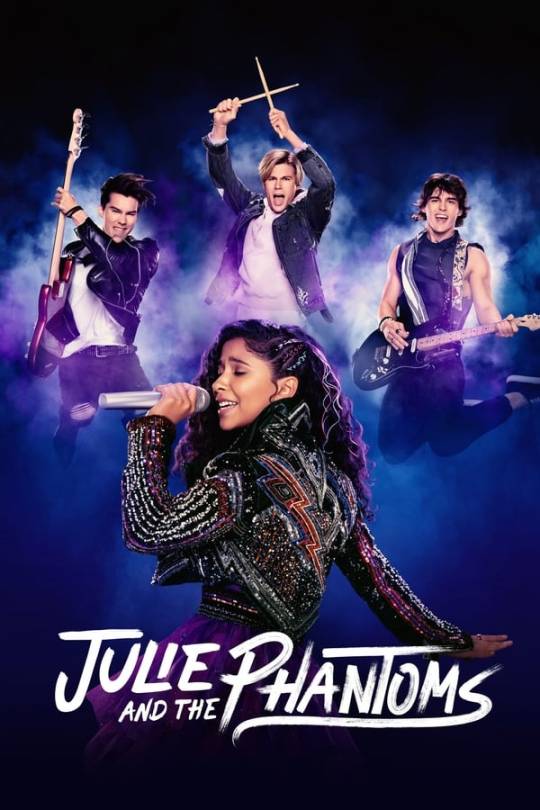
Julie and the Phantoms (JATP) is a one-season-wonder musical comedy series created by Dan Cross and David Hoge, with the notable executive production of Kenny Ortega (HSM, Descendants, Cheetah Girls, etc.). With the recent passing of her mom, Julie gets kicked out of her school’s prestigious music program for being unable to emotionally perform. When looking through her mom’s things she stumbles across a “Sunset Curve” CD and accidentally welcomes the “phantoms” into her world. Luke, Alex, and Reggie, AKA “Sunset Curve”, were a boyband from the 80s that died prematurely. After hearing Julie sing and realizing they can be seen when they play their music, they form a new band, Julie and the Phantoms.
youtube
youtube
While the show does employ a dual-focus narrative for the heteronormative pairing of Julie and Luke (never “resolved” because (a) the actor who plays Julie is a minor and Luke is not and (b) the creators were hoping for a second season, possibly with a follow-through for the more age-appropriate love interest, Nick) they also use it for the sort of rivalry that Robynn Stilwell discusses in Smash. Episode six, “Finally Free”, presents the culmination of the competition between Julie and her ex-best friend, Carrie, in their back-to-back musical performances. Carrie and her band, or rather, backup dancers, perform “All Eyes on Me”, a me-myself-and-I song dedicated to Carrie’s greatness and high social status. Though their performance is technically clean and impressive, it also solidifies a class and character difference between Carries and Julie: Carrie’s dad is a rich music executive and she is, in every way, a quintessential Disney-fied mean girl. Julie is by no means low-income, but her single-parent multi-child household and the recent loss of her mother do not position her as privileged either. Notably, Carrie is blonde and white and Julie is multiracial and brown. Though never directly stated, one may argue that this intersectional identity that Julie has is the “other cultural aspect” (Stilwell 384) used to provide deeper meaning for the show. Julie and the Phantoms perform “Finally Free” an uplifting song up to interpretation: free from grief, from judgment, from fear. All of the songs performed by Julie and the Sunset Curve boys stand out from Carrie’s due to their emotional depth and interpersonal interaction: Julie interacts with her bandmates, while Carrie’s are solely there for show.


youtube
The “inevitable coupling” in this series happens through an inevitable, albeit unconfirmed, grouping. In the first episode, we watch Sunset Curve interact with a waitress named Rose, to whom they gift a CD and t-shirt. As they exit the venue, Luke comments about how big their band is going to be, how much that waitress’s compliments resonated with him, and how excited he is to play the Orpheum. Minutes later when Julie’s looking through her mom’s things she stumbles across a Sunset Curve CD and t-shirt. We’re never told Julie’s mom’s name in the show, but given their physical similarities and how much Julie associates her with flowers, it’s widely considered that Rose was, in fact, Julie’s mom. In the final episode, Julie and the Phantoms perform at the Orpheum, fulfilling the band’s dream, and one of her mom’s. Almost every song the band sings together includes a duet section for Julie and Luke; singing/performing is where most of their connection and relationship advancement comes from. As Stilwell concludes, the creators employ duets and musical cinema to “create character relationships that would take longer to establish through normal exposition like dialogue...” (393).

With the exceptions of “Unsaid Emily” and “Perfect Harmony”, every musical interlude is incorporated fully into the physical and time constraints of the series, establishing this as a backstage musical. Most of their singing/playing is in preparation for a performance or purely for practicing and jamming together. There are lots of wide shots showing the band collectively in Julie’s garage, advancing the narrative as they perform.
@theuncannyprofessoro
18 notes
·
View notes
Text
What happened to Disney's intense phenomenon of naming character in shows after their real life actors? How much of an impact did this blurring between fiction and reality have on audience experince?
Panel Presentation: Big Time Rush (2009)
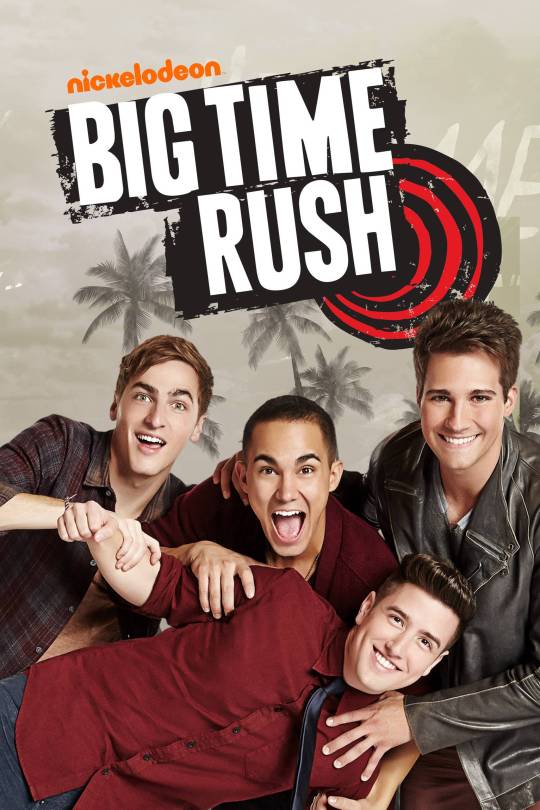
Nickelodeon’s TV series Big Time Rush follows the adventures of four hockey-playing best friends from Minnesota—Kendall, James, Carlos, and Logan (all named after their corresponding actors)—after they're selected to form a boy band. The show captures their humorous and often chaotic journey as they navigate the ups and downs of the music industry, fame, and friendship, all while trying to stay true to themselves and their roots. It's a blend of comedy, music, and the challenges of adolescence, set against the backdrop of their dream to become successful musicians.

How does the series use dual-focus narrative as a strategic storytelling tool beyond heteronormative romantic pairings?
Big Time Rush utilizes a dual-focus narrative in a way that extends beyond traditional heteronormative romantic pairings, similar to the examples of Smash and Nashville discussed in the article. Because Big Time Rush is focused on the band of friends (with occasional B plots featuring Kendall’s family), the focus of the series shifts from romantic relationships and applies the dual-focus narrative to explore themes of friendship, competition, and personal growth among the band members and their interactions with others. This strategy allows the show to address a broader range of relationships and conflicts, resonating with a wider audience by depicting varied forms of relationships and personal dynamics beyond the conventional romantic plotlines.
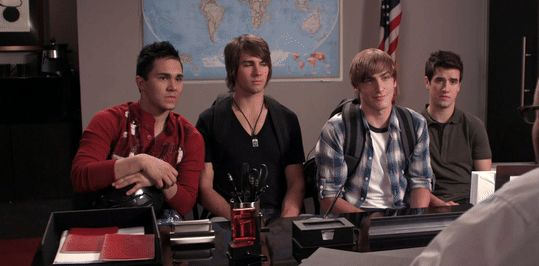
What are the “inevitable” couplings within the series and how are they accentuated through “cinematic” similarities and contrasts?
In Big Time Rush, "inevitable" couplings primarily highlight the evolving friendships and rivalries, not just fleeting romantic entanglements. The series employs cinematic techniques like strategic editing, emotive music, and parallel scene construction to enrich these dynamics. A prime example is the complex relationship between the band members and Gustavo Rocque, their producer. Their journey is marked by musical showdowns, dramatic conflicts, and heartfelt moments of unity, showcasing a spectrum of emotions that deepens the narrative. While the series does feature some romantic storylines—such as Kendall and Logan establishing significant relationships early on—these are not the sole focus. Instead, the series places a stronger emphasis on the bonds formed through shared struggles and triumphs in the music industry.
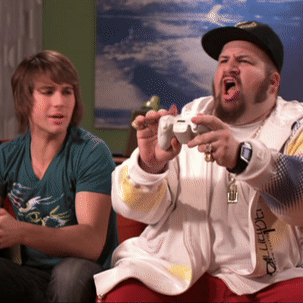
How does the series use musical numbers within and beyond the narrative world to replicate fairy tale, backstage, or folk musicals?
Big Time Rush leverages musical numbers to embody the essence of a backstage musical series, blurring the lines between the characters' real-life trials and their artistic expressions. Within the narrative world, the series uses these performances to delve into the personal and professional growth of the band members. Songs become a medium through which characters navigate the highs and lows of fame, friendship, and the music industry, offering viewers a glimpse into the creative process and the challenges of pursuing a career in entertainment. However, the musical numbers in Big Time Rush often go beyond the narrative, using the creation of these numbers as plot points in the series, giving the audience a sneak peek into the world of the music industry. This approach not only showcases the talents and hard work behind the scenes but also celebrates the communal joy of music. The series captures the spirit of backstage musicals by presenting a cohesive blend of storytelling and performance, where music acts as both a narrative force and a bridge connecting the characters with their audience.
youtube
Ultimately, Big Time Rush was created to capture the essence of the boy band phenomenon while appealing to a younger audience. Its inception was likely inspired by the success of real-life boy bands and the entertainment industry's interest in creating content that blends musical performances with narrative storytelling. The show aimed to entertain, of course, but also to inspire its audience with themes of friendship, perseverance, and the pursuit of dreams despite the odds. By showcasing the fictional journey of four hockey players turned pop stars, "Big Time Rush" tapped into the aspirational and relatable dreams of many viewers, offering both escapism and positive messages about hard work, loyalty, and creativity.
17 notes
·
View notes
Text
Do you think the satire of Schmigadoon is totally effective? The show calls out dated musical tropes by employing the same sorts of characters just with more self awareness. Do you think this is effective or do you wish they handled some tropes differently?
Roundtable Presentation: The Musical Will Be Televised - Schmigadoon!
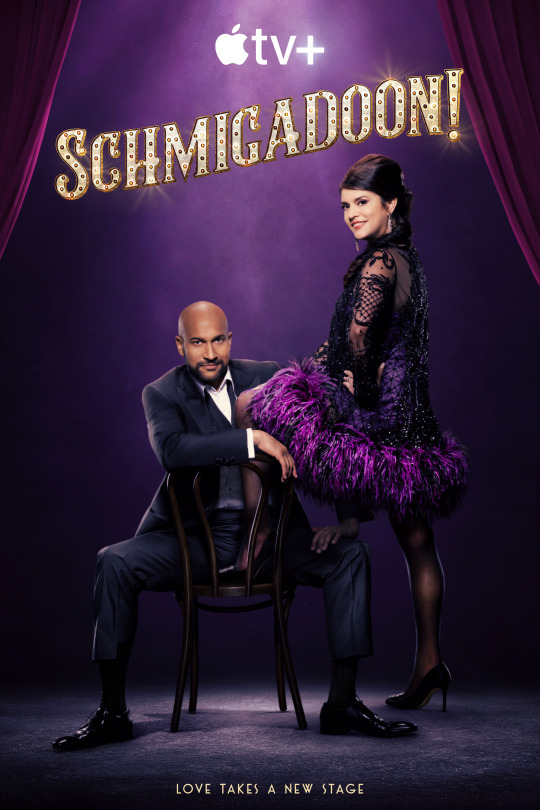
Schmigadoon! (Cinco Paul & Ken Duario) is a rom-com musical about two New York doctors attempting to strengthen their relationship, and get swept into a magical land (Schmigadoon) where everyday is a musical. The only way out of this magical land is to find true love.
How does the series use dual-focus narrative as a strategic storytelling tool beyond heteronormative romantic pairings?
Though the show is about a heteronormative romantic pairing (Melissa (Cecily Strong) and Josh (Keegan Micheal-Key)) who have been dating for four years, the show takes a bit of a turn that could possibly challenge this idea. In the first episode, they realize there must not be true love if they can't leave Schmigadoon, so they decide to breakup and find true love elsewhere. In this way, Melissa and Josh aren't portrayed as a romantic pairing, but as two people trying to learn about what it means to love separately.
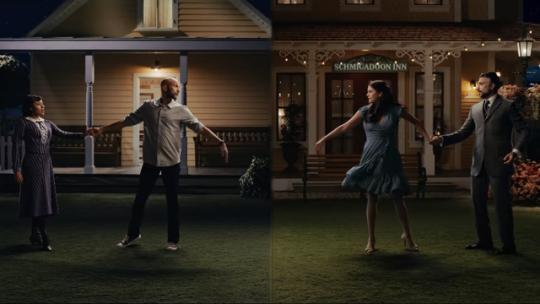
The two embark on their journeys to find love while they're trapped in Schmigadoon, their experiences parallel to one another in many ways. This part of the show made me think of Robynn Stilwell's article, “Dual-Focus Strategy in a Serial Narrative: Smash, Nashville, and the Television Musical Series", when they wrote, "The dramatic expositions are based on an alternation of male and female, complementary actions that make the characters’ meeting and eventual pairing seem “inevitable" (Stilwell 384). As the show is a musical we can expect, as the audience, that it will be a happy ending for Josh and Melissa. Their separation creates a time where they can learn about their true feelings for one another only after enduring the necessary events that will lead to their "eventual pairing".
What are the “inevitable” couplings within the series and how are they accentuated through “cinematic” similarities and contrasts?
In the first two episodes, there are two clear couples, Josh and Betsy (Dove Cameron), and Melissa and Danny (Aaron Tveit). These couples are "inevitable" in respect to the short term, as of course the long term inevitable is the reunion of Josh and Melissa.
In the first episode, Danny makes a comment upon Josh and Melissa's arrival in town about letting Melissa ride free in the Love Tunnel (a carnival ride), foreshadowing their eventual attraction to one another. This is furthered in the musical number, "You Can't Tame Me" sung by Danny that implies that she will in fact "tame" him. Later on in episode two, Melissa sings "Enjoy the Ride (Part I)" where she talks about having always played it safe with love, which contrasts with Danny's character being described as a bit of a "bad boy".
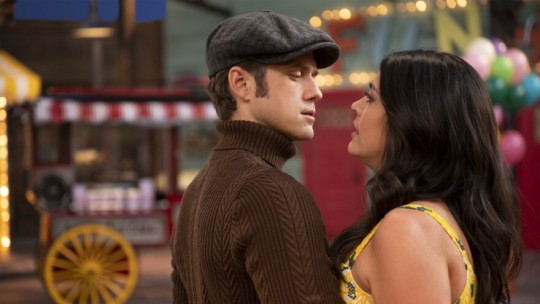
Josh and Betsy's coupling is first hinted at in the first episode when she laughs at something Josh says--that wasn't funny-- and strokes his arm while he and Melissa are ordering breakfast. In the second episode, after he and Melissa have broken up, Josh bids on Betsy's basket after she, quite seductively, insists that he do. Betsy's almost "temptress-like" character is heightened by the red color palette of her costume (bows, dress, lips, and nails). This is furthered in the musical number, "Enjoy the Ride (Part II)", where she sends mixed messages concerning her desires while on a picnic with Josh.
youtube
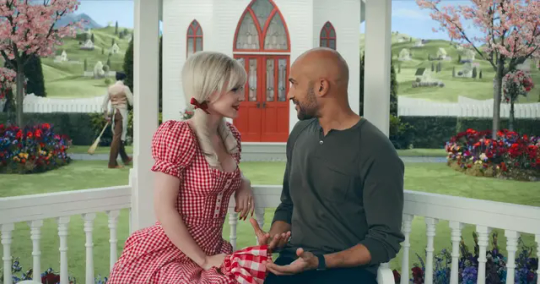
How does the series use musical numbers within and beyond the narrative world to replicate fairy tale, backstage, or folk musicals?
This series reminded me of fairy tale musicals and folk musicals. In fairy tale musicals we see common tropes such as the passive female waiting for her prince, and similarity we see this sort of manifest in Schmigadoon as well. The town of Schmigadoon is one that abides by the laws of God, and employs more traditional views on marriage and gender roles. For example, "Where a man can dream dreams so big and wide/And a gal can be ever by his side" are lyrics in the musical number "Schmigadoon!". From this song, we can get a better idea of the town's social structure.
However, the musical number "Somewhere Love is Waiting For You" sung by Mayor Menlove (Alan Cumming) challenges the fairy tale trope of female passivity. The songs talks about finding love, and pursuing it rather than waiting for it to happen to you.
youtube
As far as the show's similarity to folk tales, I thought it was especially reminiscent of white musicals. Not only is the plot focused on love and happiness outside of the workspace, but it also utilizes utopianism/escapism. At the beginning of the show, Josh and Melissa are shown at work, which is filmed with greyed and more dull colors and tones. They then leave the workspace, and enter a magical land very detached from the real world where they must find true love. In the song "Schmigadoon" shown below describes the town and how it is "the most beautiful, wonderful, magical place of all" where their motto "We always strive for peace and happiness". This follows the expectations of the white musical, as the two leads will eventually get their happy ending where something (true love) has been accomplished.
youtube
18 notes
·
View notes
Text
What kind of visual thematic elements are used during musical numbers? Are they showy like in Crazy Ex-Girlfriend for example to call back to theater musicals, or do they lean into the more contemporary pop music industry?
Girls5eva (2021-2022, 2024-)
Girls5eva is a television musical series created by Meredith Scardino, and executive produced by Tina Fey, Robert Carlock, and Jeff Richmond. Set in New York City, the series centers around four members of a former girl group – Dawn, Wickie, Gloria, and Summer – as they navigate the highs and lows of reuniting for a second chance at stardom. Each character grapples with personal and professional challenges while rediscovering their passion for music and friendship.

How does the series use dual-focus narrative as a strategic storytelling tool beyond heteronormative romantic pairings?
In Girls5eva, the dual-focus narrative extends beyond heteronormative romantic pairings by centering on the friendships and professional endeavors of the main characters: Dawn, Wickie, Gloria, and Summer. While romantic relationships are present, they are not the primary focus of the storyline. Instead, the series delves into the complexities of platonic bonds, familial ties, and individual growth trajectories. Each character grapples with their own struggles, aspirations, and personal journeys, contributing to a rich and inclusive portrayal of human connections beyond traditional romantic narratives. This strategic storytelling tool allows Girls5eva to explore themes of friendship, ambition, and self-discovery in a nuanced and relatable manner, resonating with a diverse audience.
2. What are the “inevitable” couplings within the series and how are they accentuated through “cinematic” similarities and contrasts?One of the inevitable couplings is between Dawn and Wickie. Their dynamic is accentuated through cinematic techniques that highlight their contrasting personalities and aspirations. Dawn, portrayed as ambitious and driven, represents the pursuit of success in the music industry, while Wickie embodies authenticity and genuine passion for music. Their friendship, though initially fraught with tension, evolves into a symbiotic relationship that adds depth to the storyline.
Throughout the series, Dawn and Wickie's interactions are characterized by moments of intimacy, vulnerability, and mutual support, which subtly hint at a deeper emotional connection. These moments are juxtaposed against their differing approaches to music and fame, creating compelling contrasts that drive the narrative forward.
As Robynn Stilwell suggests, the series interweaves these character arcs with themes of friendship and personal growth, mirroring the nuanced storytelling found in shows like "Smash" and "Nashville." Through cinematic techniques such as juxtaposition and thematic motifs, the contrasts between Dawn's drive for success and Wickie's genuine passion for music are accentuated, creating compelling interactions that resonate with viewers.

3. How does the series use musical numbers within and beyond the narrative world to replicate fairy tale, backstage, or folk musicals?
Within the narrative world of the series, musical numbers are seamlessly integrated into the storyline, often advancing the plot or providing insight into the characters' inner thoughts and motivations. These musical sequences are not merely moments of entertainment but crucial elements that deepen character development and advance the overarching narrative. For example, in Episode 8 "Separ8 Ways" in Season 1, we see Dawn express her hopes and fears within the groups potential split. This provides the audience with deeper insights into their motivations and struggles.
Beyond the narrative world, Girls5eva employs visual and thematic elements to evoke the atmosphere of backstage dramas. In episodes like "Tour Mode" and "Album Mode," we witness the behind-the-scenes drama of the entertainment industry, incorporating musical numbers to heighten tension and drama. There are choreographed dance numbers and emotionally charged vocal performances, which heighten the drama and showcase the cutthroat world of show business.

17 notes
·
View notes
Text
How does the show navigate diegetic musical numbers versus the backstage format? Are the transitions between the styles distinct or seamless?
Roundtable presentation: Victorious
Victorious follows Tori Vega, an unassuming teenager who lands a coveted spot at Hollywood Arts High School, a prestigious performing arts school, after taking her older sister's place in a showcase. Surrounded by her talented classmates like Andre, Robbie, Jade, and Beck, Tori navigates the challenges of high school life with a focus on music, performance, and the ups and downs of artistic pursuits. The show utilizes humor, musical numbers, and a dual-focus narrative that explores not just romantic relationships, but also friendships, mentorship, and collaboration as Tori gains confidence and embraces her newfound passion for performing.

How does the series use dual-focus narrative as a strategic storytelling tool beyond heteronormative romantic pairings?
Victorious is more of a coming of age show. I think the central focus of this dual-focus narrative is mainly navigating highschool in a very competitive performing arts world, while juggling with the drama and complexities of being a teenager.
Trina and Tori’s dynamic is a prime example of this. While often played for laughs, they offer a unique dual focus on sibling rivalry and eventual support. Episodes explore the challenges of living in each other's shadows while ultimately showcasing a bond of care, even if expressed in a quirky way.
youtube
Cat and Jade’s friendship is another example. Their contrasting personalities - Cat's bubbly, seemingly innocent and dumb, and Jade's dry wit - create a dynamic that focuses on loyalty, acceptance, and navigating the intricacies of female friendship and girlhood.
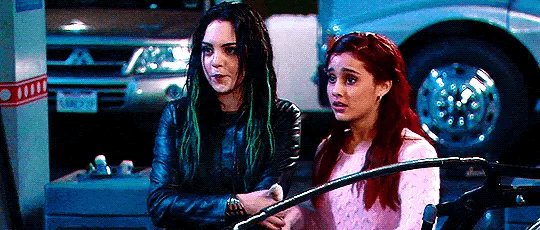
Often, the show adopts a "group focus" narrative, touching on themes of teamwork, navigating high school and the “que serás” of life after graduation. Victories at competitions, overcoming obstacles thrown their way by Sikowitz, or simply hanging out are all depicted with a group focus, fostering a sense of community and shared journey. Sikowitz, the eccentric yet insightful teacher, becomes a mentor figure for each character. The dual focus here explores themes of artistic growth, following one's passion, and overcoming self-doubt, with each character's journey receiving dedicated focus.
What are the “inevitable” couplings within the series and how are they accentuated through “cinematic” similarities and contrasts?
Beck and Jade’s love story is a classic "opposites attract" with cinematic parallels. Beck, the carefree charmer, is often contrasted with Jade's fierce and sarcastic personality. They use slow-motion moments, lingering glances, and dramatic lighting to emphasize their inevitable connection. Their contrasting personalities often lead to humorous conflicts. Jade's sharp wit clashes with Beck's laid-back demeanor, resulting in playful banter and witty exchanges. These comedic moments keep the relationship dynamic and prevent it from becoming overly sentimental. While slow-motion highlights their connection, their body language in everyday interactions can show their contrasting comfort levels. Beck might have a more open posture, while Jade might have crossed arms or a guarded stance, hinting at their underlying feelings and insecurities. Although, somehow, they seem to not be able to stay away from each other!

How does the series use musical numbers within and beyond the narrative world to replicate fairy tale, backstage, or folk musicals?
Diegetic musical numbers like "Freak the Freak Out" blur the lines between reality and the fictional performance. The song takes place during a moment in which Tori wants to prove herself and others that she is talented, in some way, it showcases her anxieties and at the same time, her confidence as she performs for the karaoke bar's crowd. On the contrary, Acoustic numbers like "You Don't Know Me" performed by Jade mirror the folk musical style, emphasizing personal growth and self-discovery. This stripped-down style allows for a more intimate portrayal of her character’s emotions and vulnerabilities, as she is often only portrayed as the punk, emo teenager with no feelings.
youtube
18 notes
·
View notes